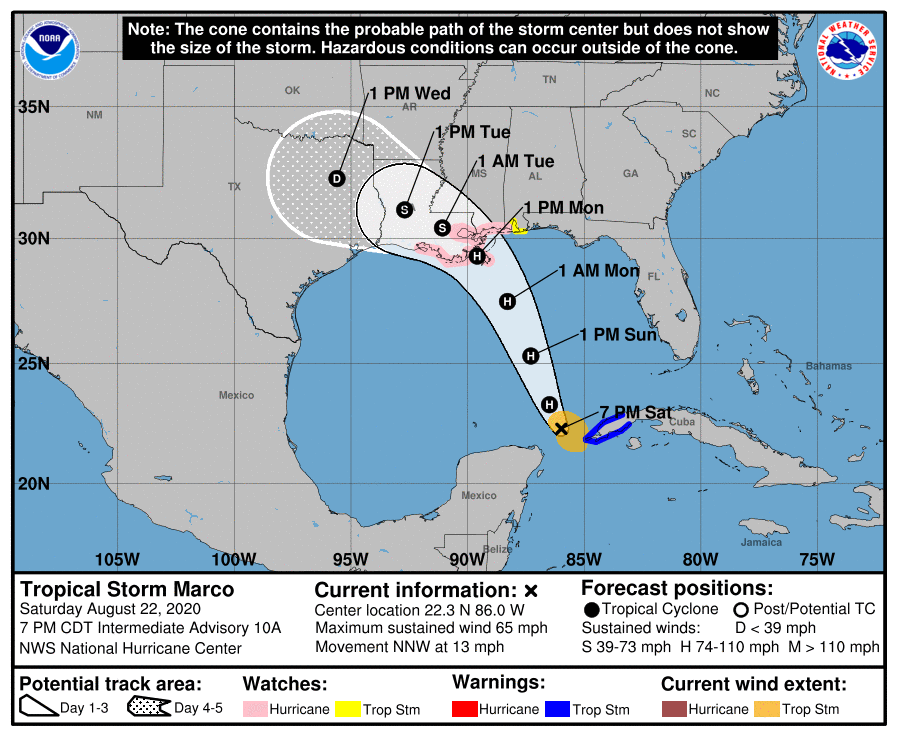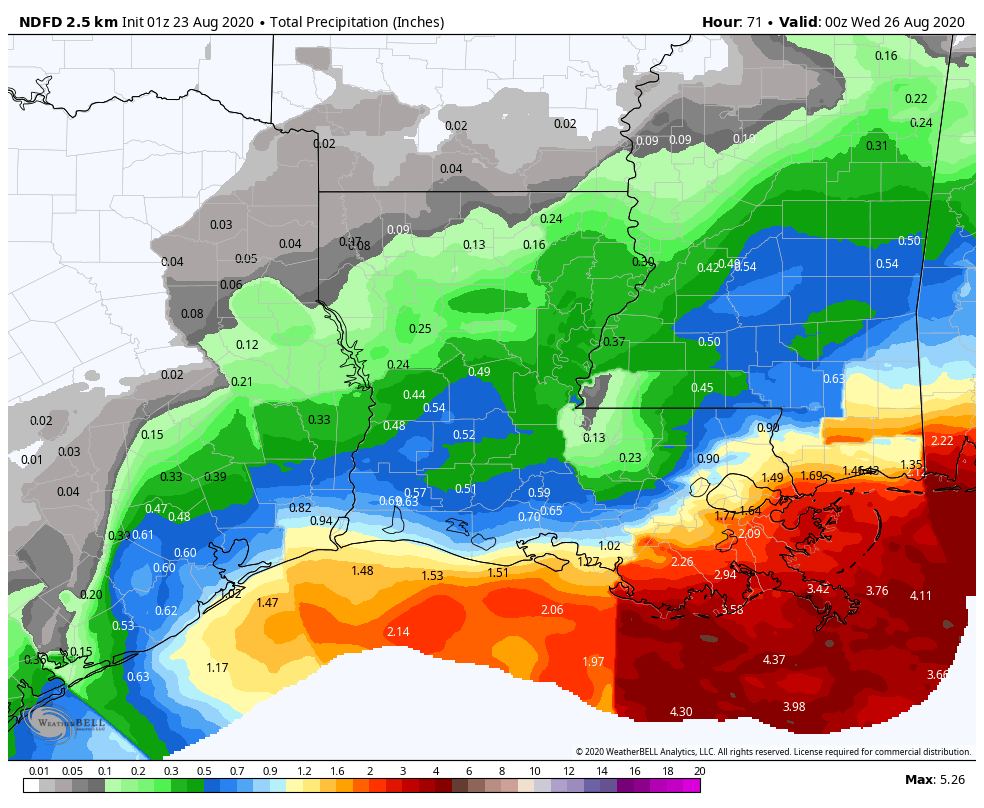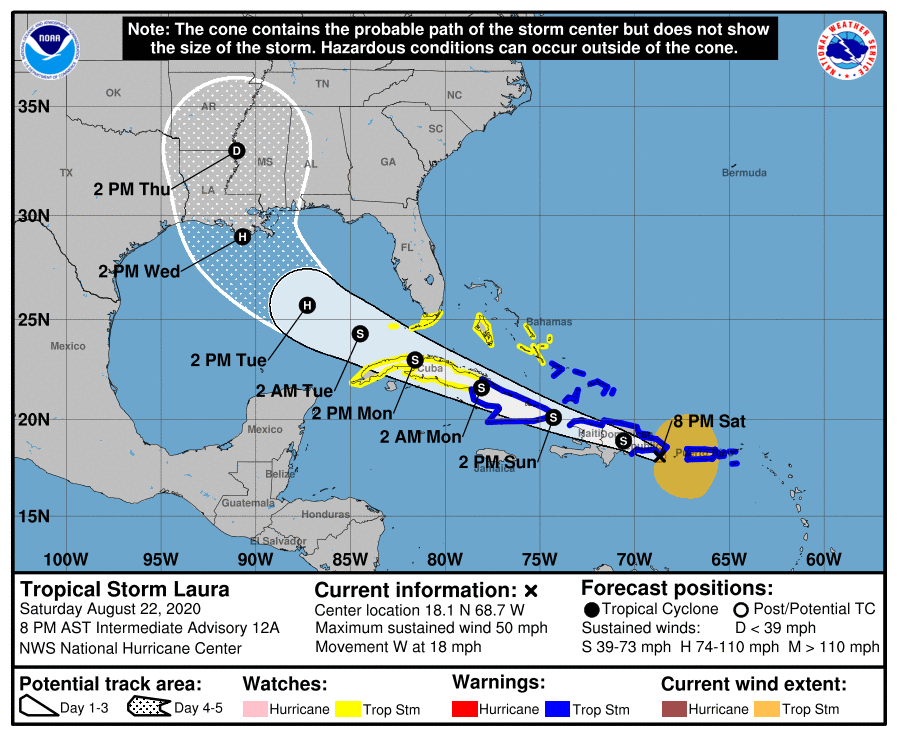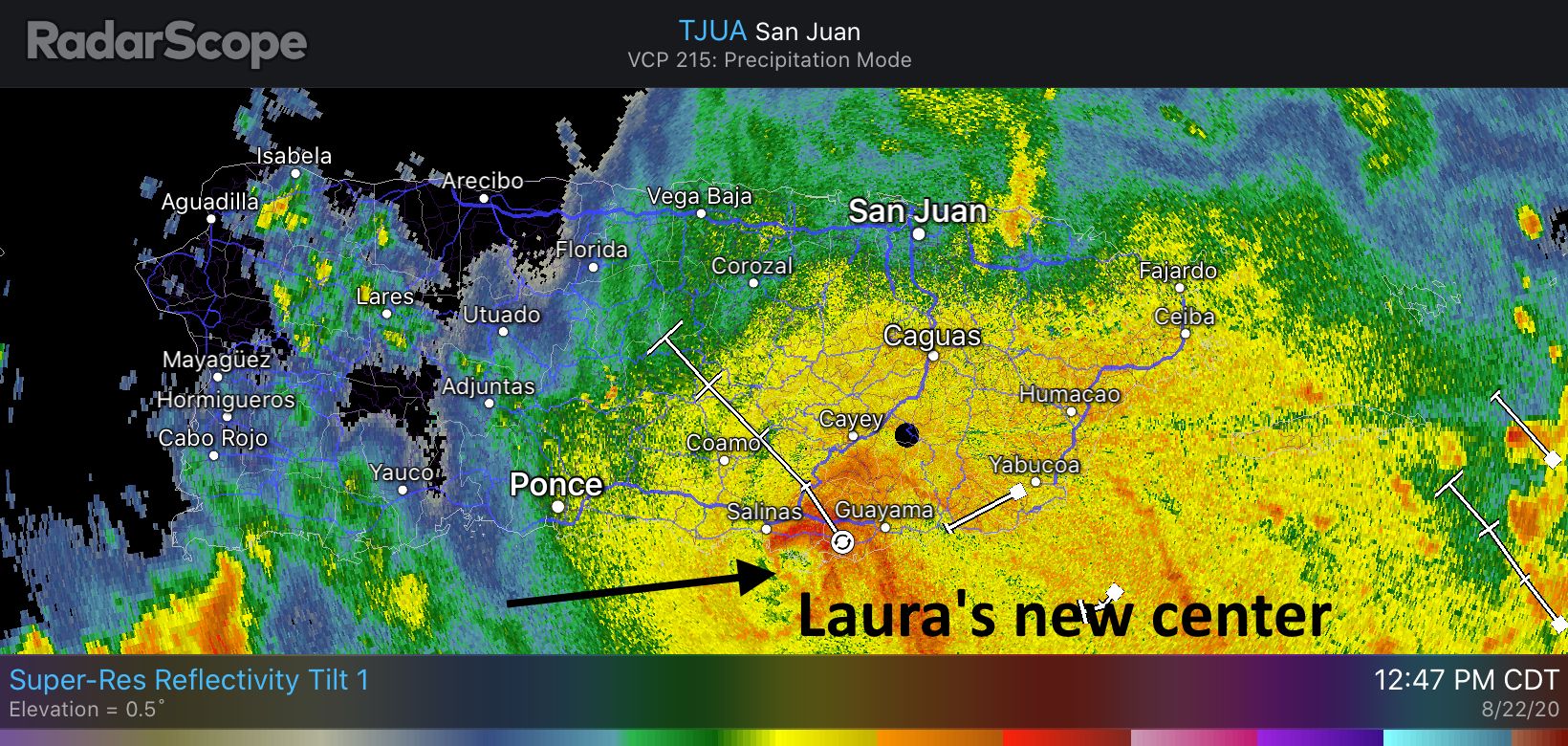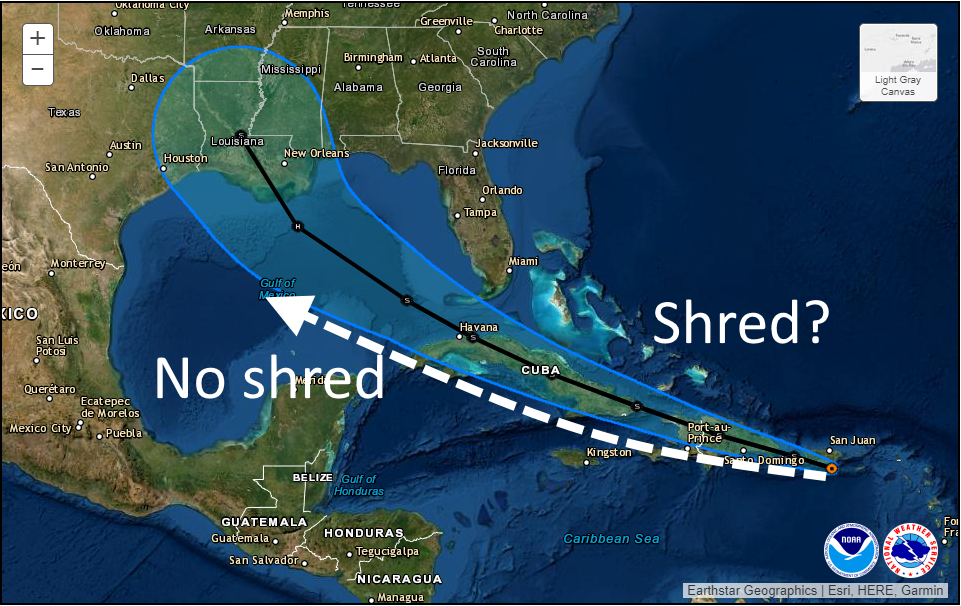Good morning. We’ll run down both storms this morning, though at a high level our concern and interest is primarily focused on Laura at this time.
Marco
Tropical Storm Marco continues to try and become a hurricane this morning in the Gulf.
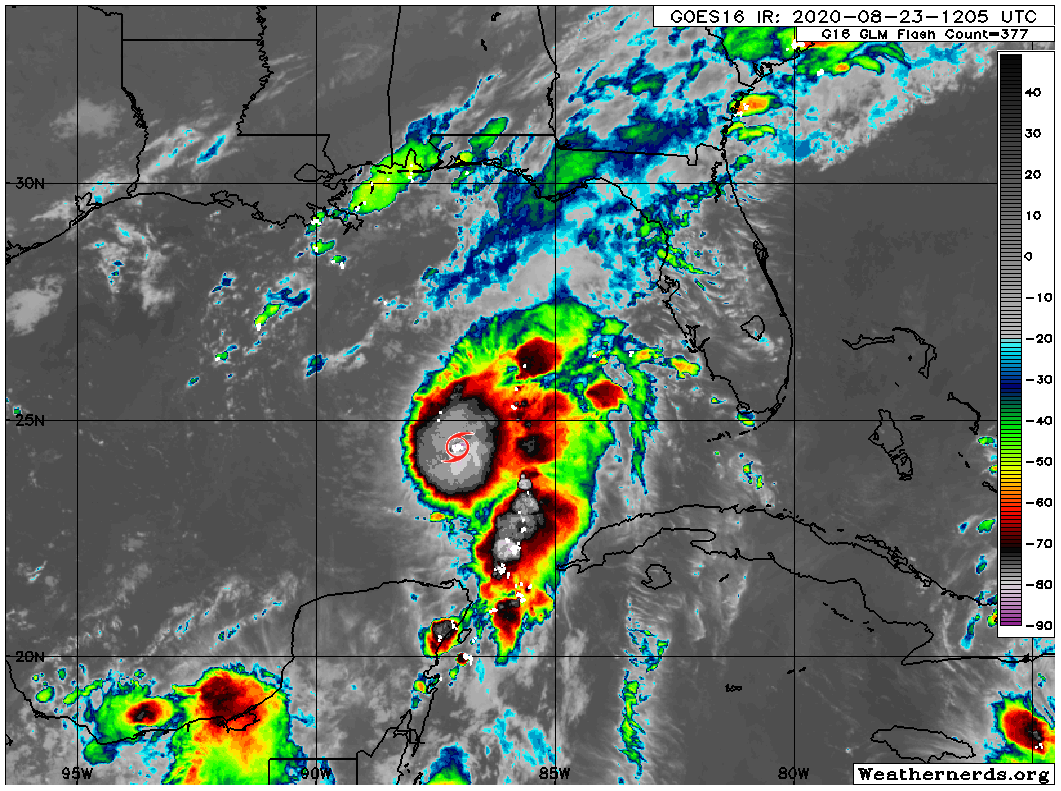
Marco is expected to continue lifting just west of due north today, and it is aiming for a landfall somewhere in eastern Louisiana before making a fairly hard left turn and basically falling apart over southern Louisiana.
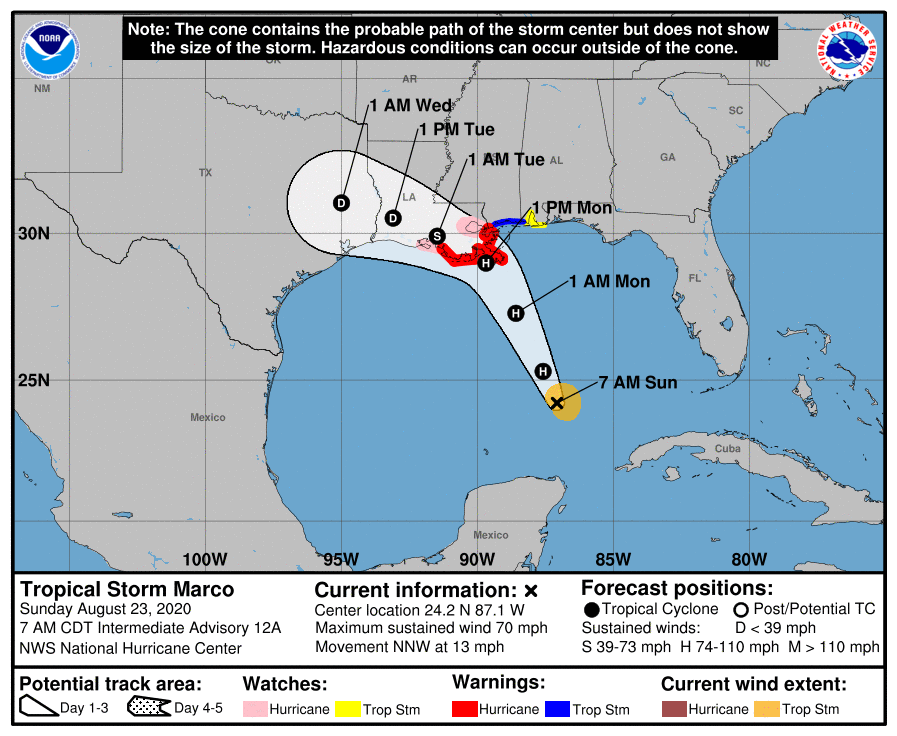
We have seen a model or two bring the remnants more west along the coast, which would increase some storm chances for us and deliver some localized heavy rain on Tuesday, but right now those issues aren’t expected to be too serious.

Rainfall through Tuesday evening is expected to be mostly minor, with the best chance of something heavier along the immediate coast and lesser chances inland. The heaviest rain remains directed into eastern Louisiana.
The brief summary on Marco: Perhaps a small hurricane into southeast Louisiana before it dissipates while shuffling west across southern Louisiana, keeping most heavy rainfall well off to our east.
Laura
Tropical Storm Laura looks impressive this morning, mainly because it’s coming out of the typical nighttime peak in thunderstorms, and because it is doing this while interacting with Hispaniola, which often rips these things apart. Laura is the unfortunate one that actually gets by Hispaniola without a lot of trouble because it was disorganized to begin with.
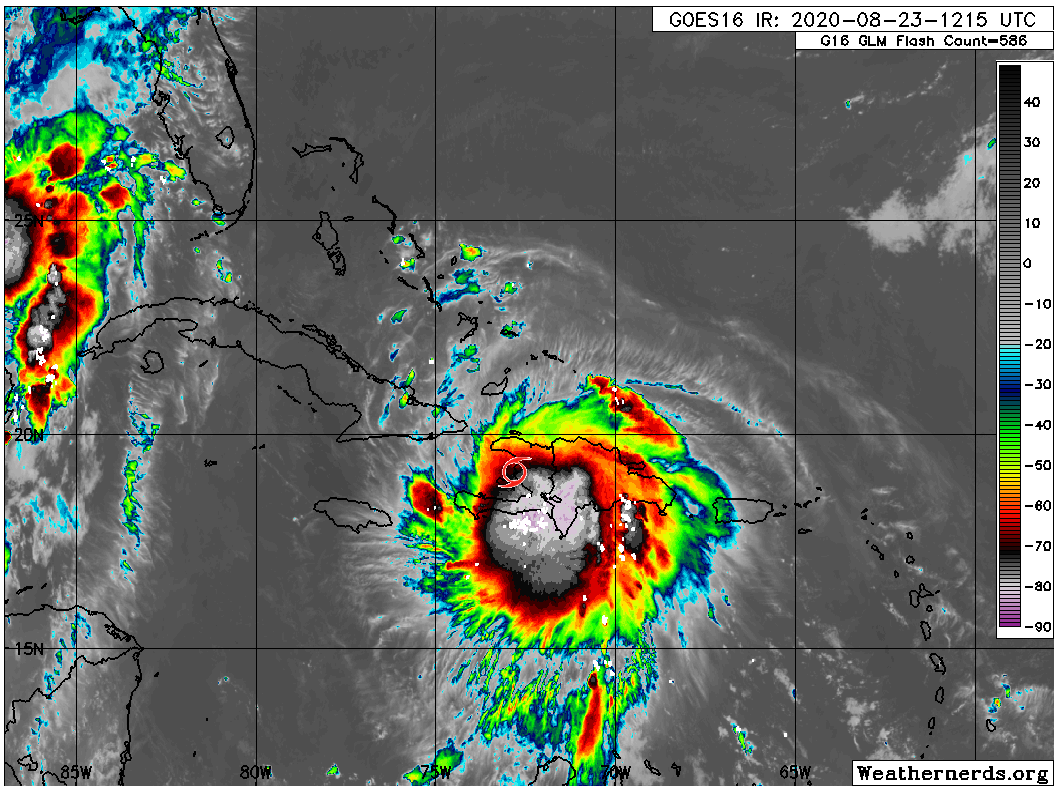
If you want to provide some criticism of Laura, it’s that the storm is somewhat lopsided. But short of that it has a healthy core of storms, some developing outflow, and it is now exiting the highest hurdle it needed to survive, Hispaniola. Cuba comes next, but the bottom line here is that Laura has the skeleton it needs to become a healthy tropical system when it eventually finds a more hospitable environment for strengthening, likely Tuesday and Wednesday over the Gulf.
Laura’s track has shifted a little to the west since yesterday, but if you read between the lines in the National Hurricane Center’s discussion, there are likely to be more westward shifts to come.
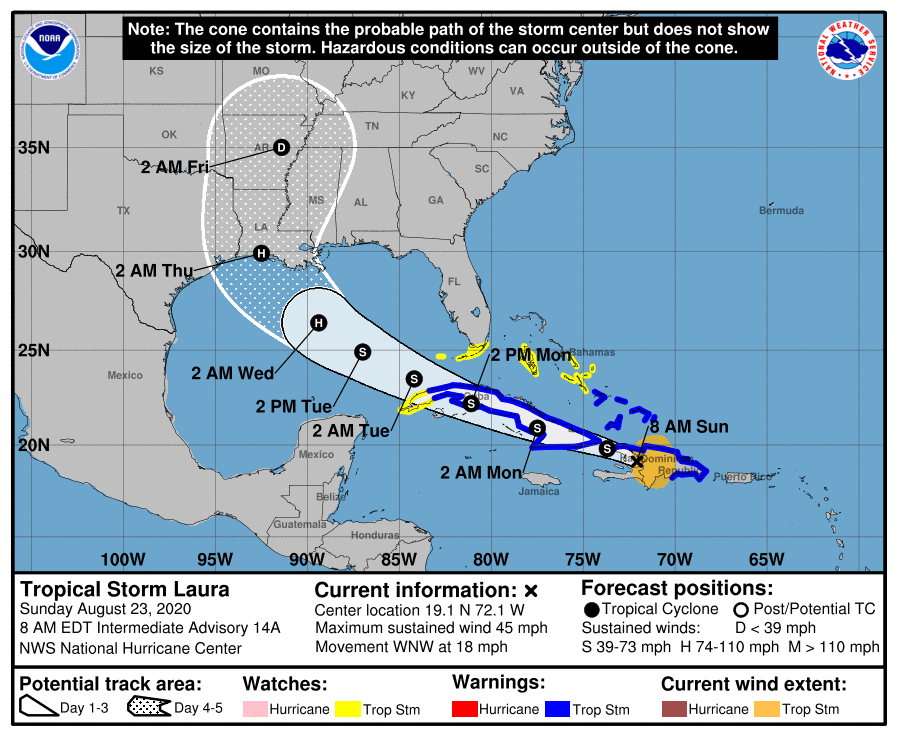
The battle lines right now are between some of the typical global models we use for day to day forecasting, which take Laura farther west, more into Texas and the tropical models we use for situations like this, which have skewed a little farther east, more into western Louisiana. Laura is going to basically work around the periphery of high pressure off to our north and east. Typically, we would expect the global models to have a better handle on the steering situation, so there is a reason to put some trust in them over the hurricane ones for track right now. Once Laura works across Cuba and emerges into the Gulf tomorrow, we will have a better idea of whether Corpus, Houston/Galveston, Port Arthur, or central/eastern Louisiana are most at risk. Right now, all we can tell you is that trends since yesterday have only served to give us more pause about how close Laura may come to southeast Texas. We continue to urge you to pay close attention to this storm and make your preparations today in case they need to be implemented quickly tomorrow and Tuesday.
How strong will Laura be when it gets where it’s going? That’s a great question, and right now, the reliable model intensity guidance ranges from a low-end category 1 storm to a high-end category 3 storm. Given the history of the Gulf, the fact that it’s going to be in a fairly favorable environment for strengthening, and frankly how it has performed so far, we would likely lean toward the higher end of things with respect to intensity right now. The NHC forecast is calling for a category 2 hurricane at max, which is right in the middle of reliable guidance at this time. Hurricane intensity remains a very, very difficult thing to predict and though we are bullish on this storm’s strength right now, there are still risks equally spread that we may be too aggressive or not aggressive enough. More clarity on this should come tomorrow.
As far as rainfall goes? That is always a concern, but Laura is expected to keep moving and no models indicate a slowing or stalling. For all intents and purposes, we are viewing this a tropical threat (storm surge, wind) first and foremost and a rainfall flooding threat secondarily. Again, please stay aware and ready to act.
Eric will have our next update posted no later than 3 PM today.


